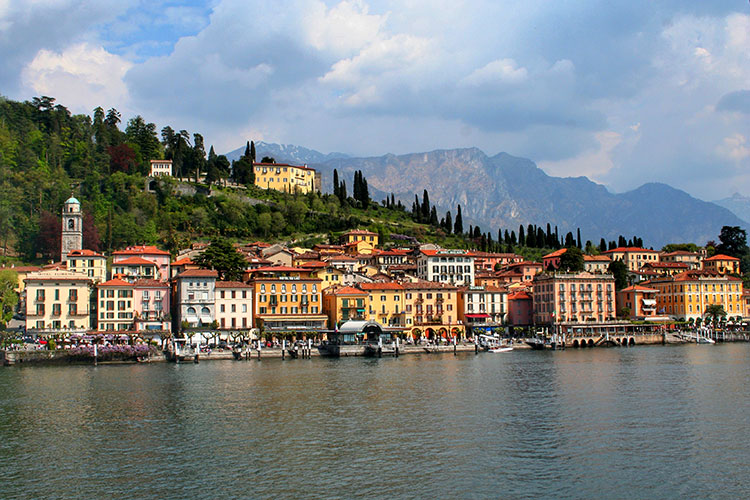
The small city of Como is often overlooked by travelers, who pass through it on their way from Milan to the fabled lakeside village of Bellagio and the balmy year-round climate of the Tremezzina Riviera. Trains from Milan take them to the nearby main train station or to a smaller one right at the dock where the lake steamers leave, so most barely stop to look around this provincial capital at Lake Como’s southernmost point.

Como’s setting alone is worth a longer look, caught in a cleft of mountains dropping into the lake. A palm-lined park and promenade barely separate the smart shopping streets (Como’s main product is silk, shown in shop windows throughout the city) and historic sites from the waterfront, where a marina and the steady comings and goings of excursion boats provide a busy foreground for lake and mountain views.
Piazza Cavour, facing onto the lakeside park, is the city’s hub, and from it radiate streets that lead along the shore and into the Cortesella, Como’s compact old center (look here for the best restaurants). The grid of straight streets shows Como’s Roman beginnings, as do the remains of the Roman gate, Porta Pretoria. Around the edges are vestiges of Medieval walls and the far end from the lake at Piazza Vittoria is Porta Torre, a rare Romanesque city gate.
The star of the old town is the 14th-century Duomo, with Gothic pinnacles and a carved marble façade. The stone work, like much of the Medieval stone carving around the lake, is the work of the Maestri Comacini, a group of master stoneworkers who were much in demand throughout northern Italy.
Inside Gothic and Renaissance styles blend – the Duomo is considered Italy’s best example of this 14th-century transition. Alongside the Gothic rose window and deep carvings on the altar are painted and gilded carvings on side altars. Luino’s Adoration of the Magi hangs in the second chapel on the right.
Nearby, the Museo Civico, which includes the Museo Archeologico, fills two former palaces with local art, history and culture, from neolithic and Roman artifacts to the decisive battle of the Risorgiamento (when Italy gained liberation from Austria) that took place in the hills overlooking Como. (Museo Civico, on V. Vittorio Emanuele, is open Tuesday through Sunday).
A white temple-like building on the lake is the Tempio Voltiano, a museum commemorating Alessandro Volta, the local resident whose name is given to the electric volt. In front of it is the Holocaust Memorial, with quotes from victims in various languages. At the far end of the shore are the beautiful public gardens of Villa Olmo.
Well worth the walk along from the train station along Via Regina, is the Romanesque Church of Sant’Abbondio, an 11th-century work of the Maestri Comacini. Most of their intricate stone carving has been removed from the exterior to the Museo Civico, but the reason for going is the beautifully-preserved 13th-century Gothic fresco cycle inside.
In the early 20th century Como was again a center for architects, this time the leaders in Rationalism, an early school of Modernism. Their masterpiece – and an architectural landmark — is the 1932 Casa del Fascio, built by Guiseppe Terragni, located behind the Duomo. Other Modernism icons in Como are the Novocomum (1927) and the Monumneto ai Caduti (War Memorial) on the waterfront.
For splendid views, ride the century-old Brunate funicular from Piazza de Gasperi, on the lakefront, climbing steeplyto a hilltop town. A walk farther up to a terrace at the top brings views up the lake to the Alps.

